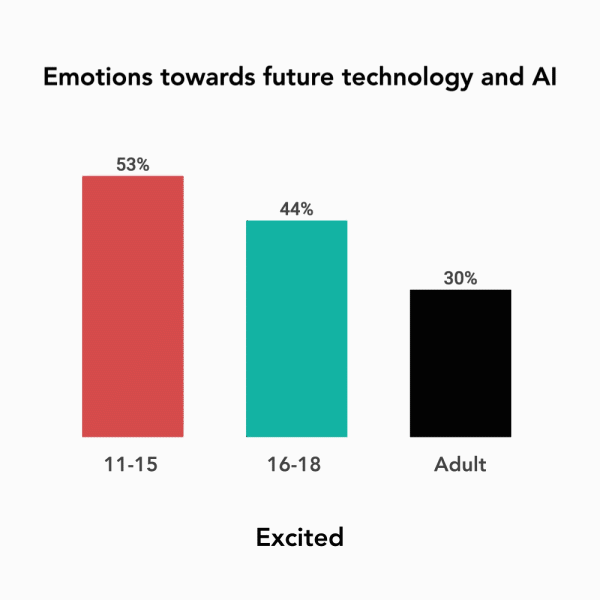Welcome to Innovation Insights
Recently, Northstar (global market researcher) and Arm (semi-conductor company valued at £23.4 billion) have collaborated on several projects about use, perceptions and predictions for technology. These projects cover a range of topics but they all touch on one thing: innovation.
Innovation in the technology industry can be…
- Technological (e.g. advances in touchscreen technology)
- Product based (e.g. a multi-touch touchscreen mobile phone)
Insight can be used to understand demand and opinion of technological innovation as well as identify customer needs for product innovation. Furthermore, speaking to consumers post launch can uncover whether these new innovations are having unintended consequences such as excessive use.
Innovation Insights is a monthly series covering topics related to innovation such as:
- The 5th wave of computing – how will 5G, IoT and Artificial Intelligence (AI) interact and lead to new innovative products?
- AI forms – what form will AI take in the future according to customers and what does that mean for AI developers?
- Security – will security concerns stifle technological and product innovation or simply lead to more secure products?
- Insight driven innovation – what processes can be used to turn insight into innovation and how can insights into the way youths interact with technology be used to prototype software that assists and empowers them to tackle cyberbullying?
Innovation is not just important for business success, but it can have a profound impact on many societal problems. On the topic of climate change, Bill Gates has stated “The path to success is going to require innovation”. Due to innovation in the Internet of Things, Scottish councils are using sensors to detect risk of fuel poverty in social housing.
First up in the series, we look at the differences between youths (11-18 years old) and adults with regards to current and emerging technologies.
Why investigate the difference between adults and youths?
Last year, the Youth on Tech series on Research World examined how youths used and thought about technology. The first article in the Innovation Insights series will contrast youth opinion with adults. First, looking at the similarities and differences in their understanding, feelings and opinions towards future technologies. Second, what this means for innovation.
This contrast is important because where youth opinion is drastically different from adults, technology companies need to ensure their innovations will appeal to youths, the future consumer. Furthermore, only by speaking to youths and seeing how they differ from adults can we understand issues or opportunities that are unique to them.
The older we get, the more concerned we are about the future of technology
Emotion towards a world with increased technology follows a consistent pattern. As we become older, excitement decreases, and concern grows. However, negative emotions only outweigh positive once we reach adulthood.

The increased concern shown by adults towards future technology is rooted in stronger privacy concerns. 61% of youths either like or don’t mind technology learning who they are and what they like. Moreover, 39% are not concerned about their internet history being used by technology companies. On the contrary, 75% of adults are concerned about AI machines being hacked.
It is difficult to determine if this concern is generational or a function of growing older. For example, will these youths grow to become more security conscious or is the fact they have grown up with this technology diminishing their concern? These are important considerations for technology companies as they look to innovate but keep consumer data secure.
Youth’s appetite for voice technology is large
Following the same pattern as emotions towards future technology, the older we get, the less we like using voice technology. 11-14 year old’s even prefer using voice technology to physical inputs. Again, it is hard to know if they like voice simply because they are younger, or if they prefer it because their generation has grown up with the ability to speak to technology.
AI and coding will be the subjects and jobs of the future
There is recognition among both youths and adults that the future education and job market is going to change. Youths see STEM subjects, particularly AI and coding, as the most important to study in the future. Parents are very much on board with this: 69% would be happy for their child to pursue a career in AI and machine learning.
Arm’s GenArm2Z program is already promoting youth innovators, particularly in the coding and AI fields. Innovations such as a board game designed to teach youths to code (CoderBunnyz) and EduBlocks, a drag and drop educational tool for learning Python, have come from the youth ambassadors in the program.
Youths will dictate the use of robot carers
Youths are more open to the idea of technology helping with social care activities than adults. For example, 63% of youths said they’d be happy for robots to take care of their parents when they were old, yet only 39% of adults would trust an AI to look after an elderly friend or relative.
The development of robot technology is unlikely to slow down, and it is the youth opinion that will matter the most. They will likely be making the final decision with regards to robot carers. Innovations in robotic empathy are likely to become significantly more important as robot carers are deployed around the world, especially in countries with aging populations such as the UK and Japan.
Next month on Innovation Insights, we’ll look at the different forms AI might take, which ones are most appealing to consumers and how that will impact commercial innovation.


